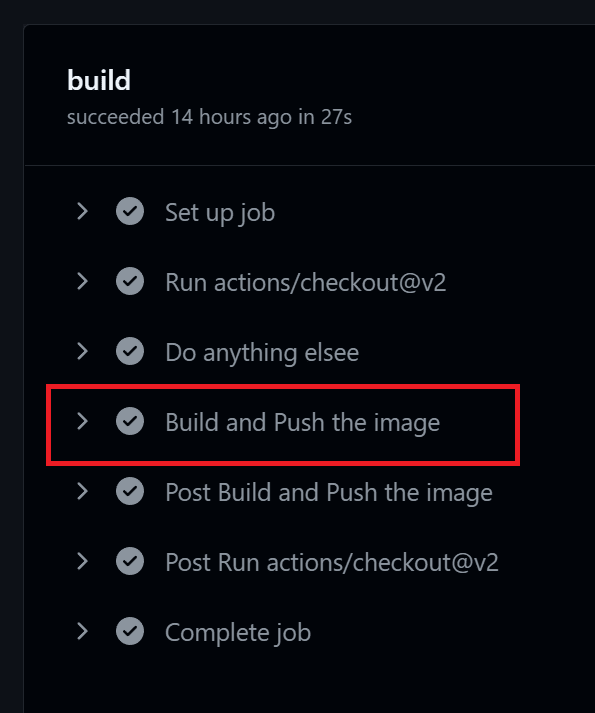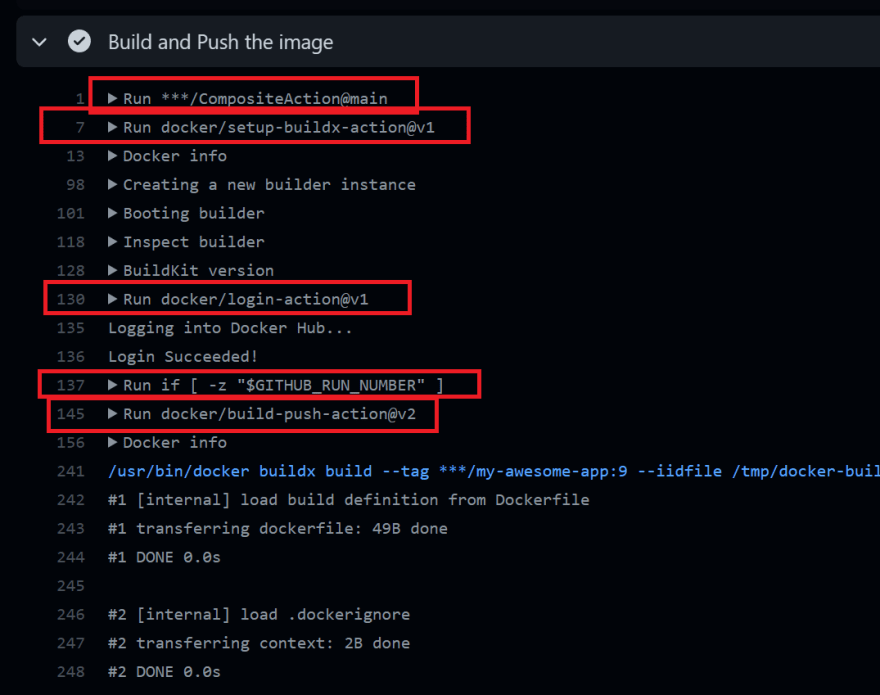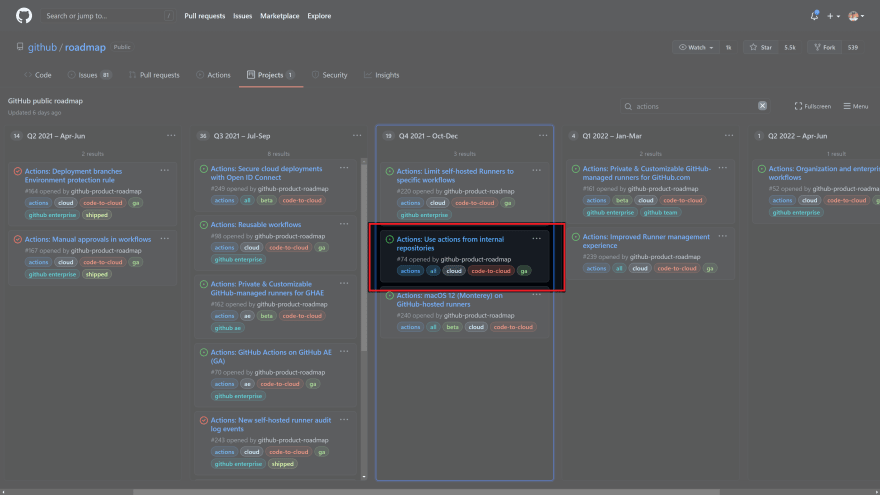An Interest In:
Web News this Week
- April 23, 2024
- April 22, 2024
- April 21, 2024
- April 20, 2024
- April 19, 2024
- April 18, 2024
- April 17, 2024
Create GitHub Actions Templates - New Composite Actions Feature Explored
While I've covered the basics of the Composite Run Steps Actions in this other post and video, and therefore I will not go too in depth in those here, today I will show you one of the most important new features in GitHub Actions in the last 6 months, at least in my opinion: The possibility to use other Actions in a Composite Action.
Video
As usual, if you are a visual learner, or simply prefer to watch and listen instead of reading, here you have the video with the whole explanation and demo, which to be fair is much more complete than this post.
Link to the video: https://youtu.be/4lH_7b5lmjo
If you rather prefer reading, well... let's just continue :)
The Problem and The Solution
Until now, Composite Actions could use only scripts, either inline in the YAML or in separate files. And this of course was pretty limiting.
But now they can instead reference other Actions as well, making them the de-facto equivalent of templates in Azure Pipelines, Jenkins, and so on so forth.
And of course this also makes it easy to reduce duplication in your workflows, and it is perfect for repetitive tasks.
The Scenario
Alright, let's see how we can create Composite Actions that use other Actions, and how to use them. For this example, I wanted to create something actually useful. I decided to go with templatizing the Build and Push of a Docker image, which is something I do all the time in my workflows, and represent a recurrent set of tasks.
Create a Composite Action with Actions
First think we have to do is creating an action.yml file in the root of a public repo, which will become the "source" for our Composite Action.
Next, we can add some metadata.
name: "Publish to Docker"description: "Build a container image and Pushes it to Docker registry"These two lines just add a name and the description, so we know what our Action does.
Next, we need some inputs. We'd need for example the Docker registry username and password, the image name, tags, etc.
inputs: registry_username: description: "Username for image registry" required: true registry_password: description: "Password for image registry" required: true image_name: description: "Name of the image to push" required: true tag: description: "How to tag the image. Default: latest" As you can see we can set the inputs as required, or leave them optional (as the tag).
Last part before we can add the actual task, we need to let GitHub know this is a metadata file for composite actions:
runs: using: "composite" steps:Add the tasks
Alright, we are ready to add our task. How? Well, exactly in the same way you'd do in a normal Actions workflow:
- name: Setup BuildX uses: docker/setup-buildx-action@v1 - name: Login to the Registry uses: docker/login-action@v1 with: username: ${{inputs.registry_username}} password: ${{inputs.registry_password}} - name: Set the tag shell: bash run: | if [ -z "${{inputs.tag}}" ] then echo "final_tag=latest" >> $GITHUB_ENV else echo "final_tag=${{inputs.tag}}" >> $GITHUB_ENV fi - name: Build and Push the Image uses: docker/build-push-action@v2 with: context: . push: true tags: ${{inputs.registry_username}}/${{inputs.image_name}}:${{env.final_tag}}The only difference is that you'd need to add the Actions references (for example uses: docker/setup-buildx-action@v1) manually because there is no marketplace pane on the right side of the screen like you'd have in the Actions workflow.
Suggestion: if you don't remember all the Actions names, you can compose your tasks in the normal workflow editor, and then copy them over into the Composite Action
Another thing worth noting in the YAML is how you use the value of the inputs: ${{ inputs.image_name }}
And that's basically all you need to do for creating a Composite Action that uses Actions in it. Just commit and you're good to go.
Check out the n3wt0n/CompositeAction repo to see the whole YAML
Use the Composite Action in your Workflow
Let's see now how to use our action in a normal workflow.
All you have to do is referencing that Composite Action using the username (or organization account) and the name of the repo:
- name: Build and Push the image uses: n3wt0n/CompositeAction@main with: registry_username: ${{secrets.REGISTRY_USERNAME}} registry_password: ${{secrets.REGISTRY_PASSWORD}} image_name: my-awesome-app tag: $GITHUB_RUN_NUMBERIn the YAML above, in the uses you can see that I reference my Composite Action using my account name (n3wt0n), and the repo name (CompositeAction). Plus, I need to use a version. In this case I used main, which means that my workflow will always use the latest version of the Composite Action available on the main branch. If you want to have a static version instead, you'd have to create a tag on your repo and use that instead of the branch name to version your Composite Action.
Lastly, as you can see you can pass your input values using the with keyword
Check out the n3wt0n/ActionsTest repo to see the whole YAML
The Log
Last thing worth mentioning is how the whole thing is printed out in the logs.
As you can see, we have the Build and Push the image task (which is how I called the step that uses my Composite Action) but we don't have the details of the steps in the Composite Action itself.
We have however the logs of the steps in the actual log:
Conclusions
As you can see, this new capability of the Composite Actions is very useful for simplifying repetitive tasks and to make sure everything needed is included in your workflow with just a single reference.
As I've mentioned before this feature is for me one of the best new additions to GitHub Actions in the past few months. Do you agree with me? Let me know in the comments below.
I also think that when it would be possible to use custom actions from internal and private repositories, which is a feature that is actually planned for the last quarter of this year, as you can see here on the GitHub's public roadmap, this will be even more powerful. Let me know in the comment section below how do you use or plan to use the Composite Actions.
You may also want to watch this video, in which I talk about all the basics of the Composite Run Steps Actions.
Like, share and follow me for more content:
YouTube
Buy me a coffee
Patreon
Newsletter
CoderDave.io Website
Merch
Facebook page
GitHub
Twitter
LinkedIn
Podcast
Original Link: https://dev.to/github/create-github-actions-templates-new-composite-actions-feature-4ibk
Dev To
 An online community for sharing and discovering great ideas, having debates, and making friends
An online community for sharing and discovering great ideas, having debates, and making friendsMore About this Source Visit Dev To





